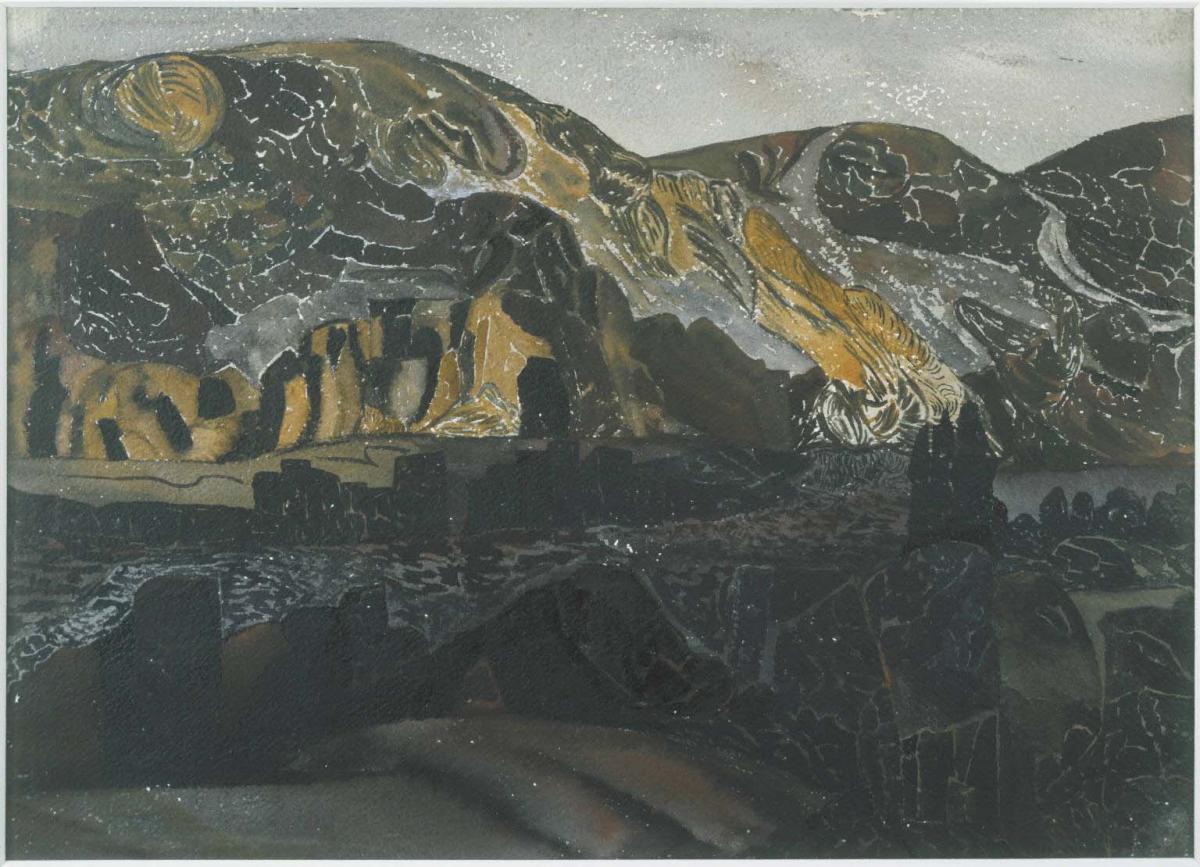Agate Heights
Elisabeth Poe ( 1938 )

Nothing in Elisabeth Poe’s work provides context. Titles, though lyrical, are generic, only providing information that can already be derived from the work. In Agate Heights, the metamorphic cliffs take their shape from the rocks for which they are named. The formations are equally repetitious patterns and points of emphasis created by the dim yellow forms across the middle ground. Poe’s understanding of light is on full display here: the foreground, cast in dramatic shadow, contrasts with the points of light that appear between the brushstrokes. Using calligraphy brushes, she immersed herself and her viewers in a fabricated world.
In her day, Poe’s paintings were described as poetic, referencing her third cousin, Edgar Allan Poe. Though her work was purchased by a few notable institutions and highly praised by Duncan Phillips, over time it fell out of favor and was even decommissioned by museums that once supported her. Yet Poe landscapes remain unique, dynamic portraits of rock formations untouched by human activity, primed for the viewer’s contemplation.
Text by Rebecca Shipman as part of the Seeing U.S. Research Project